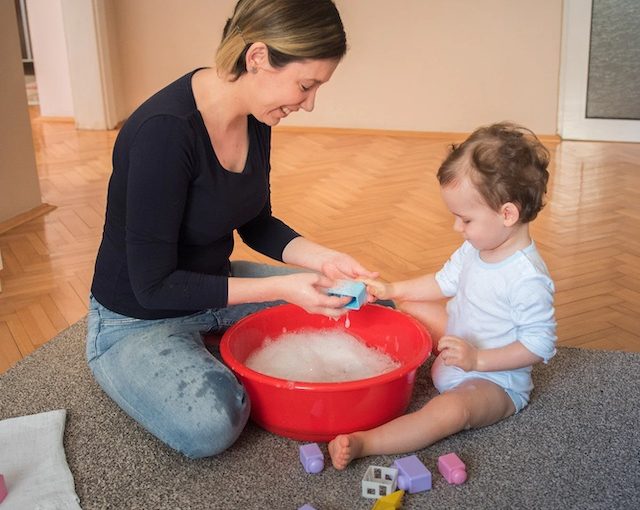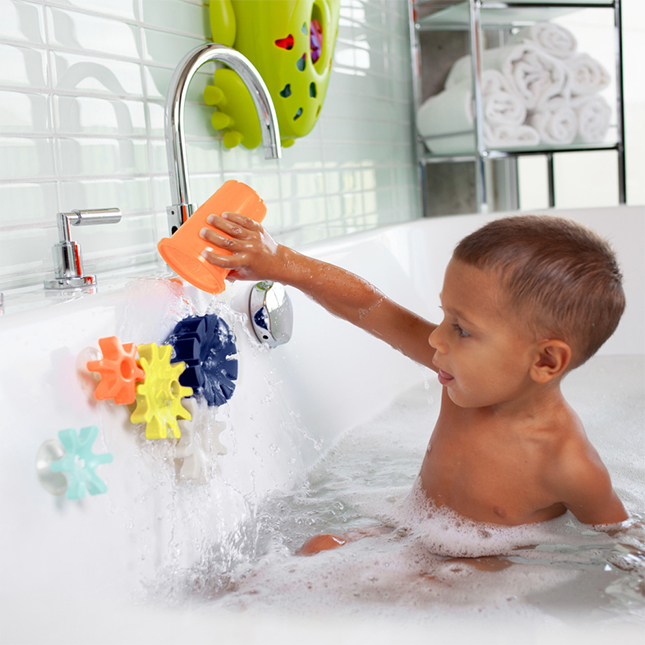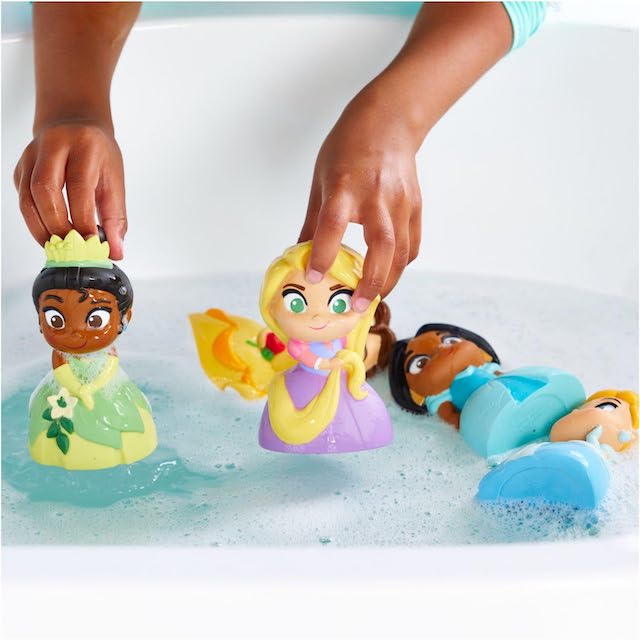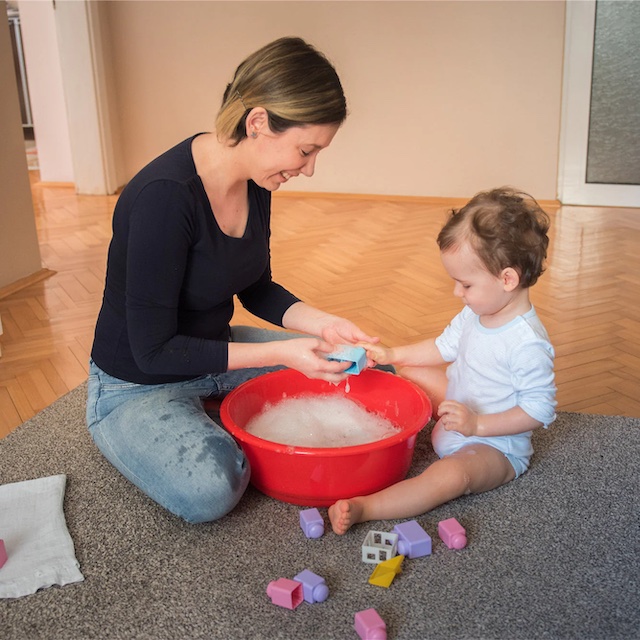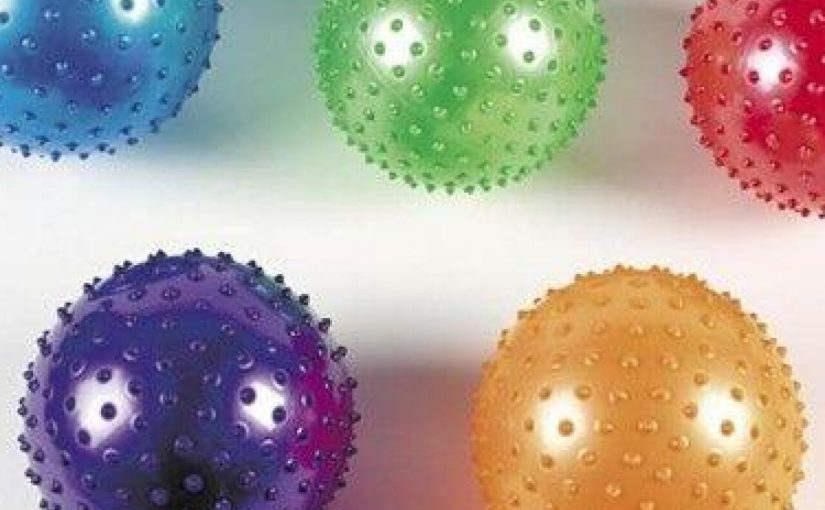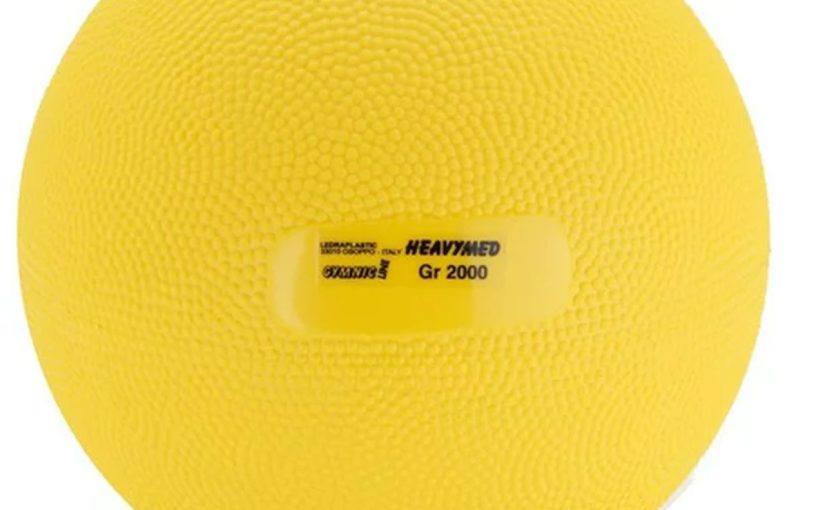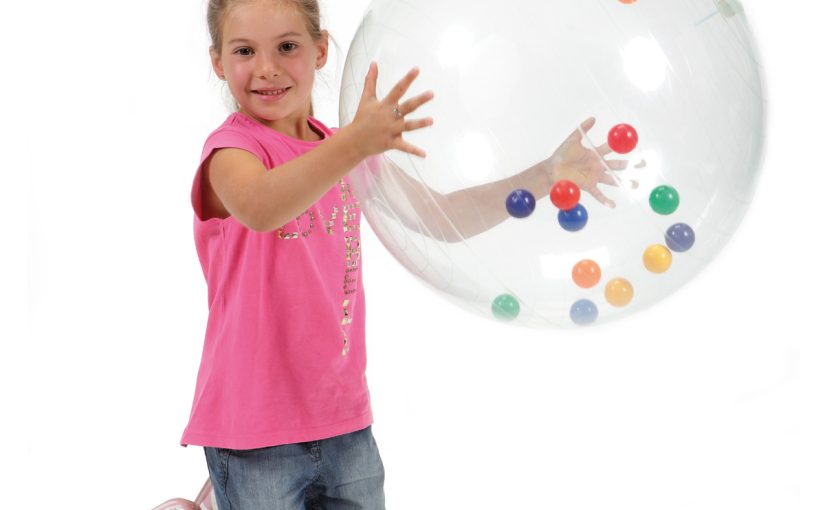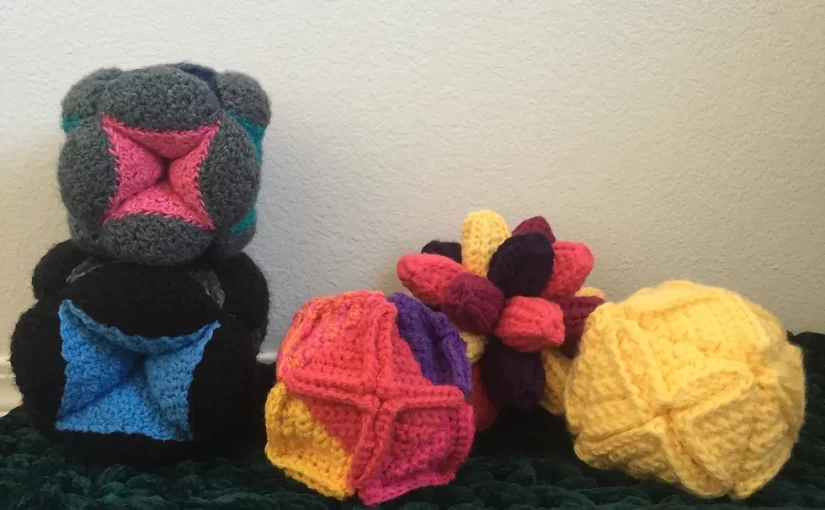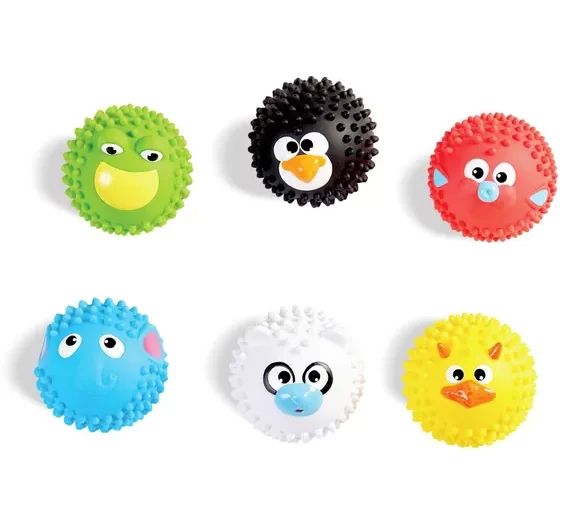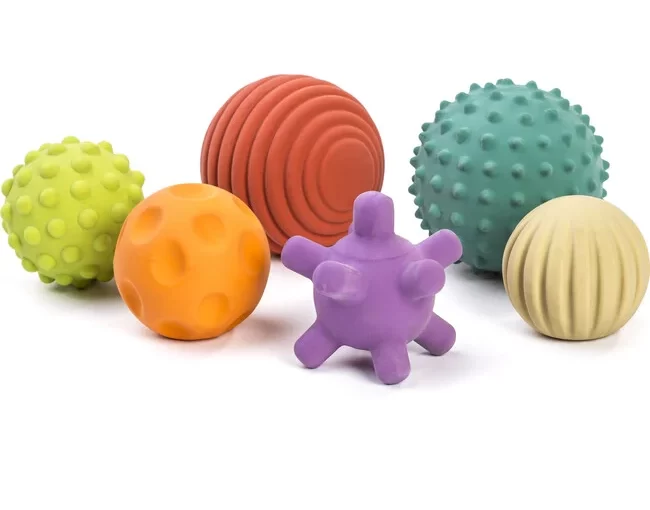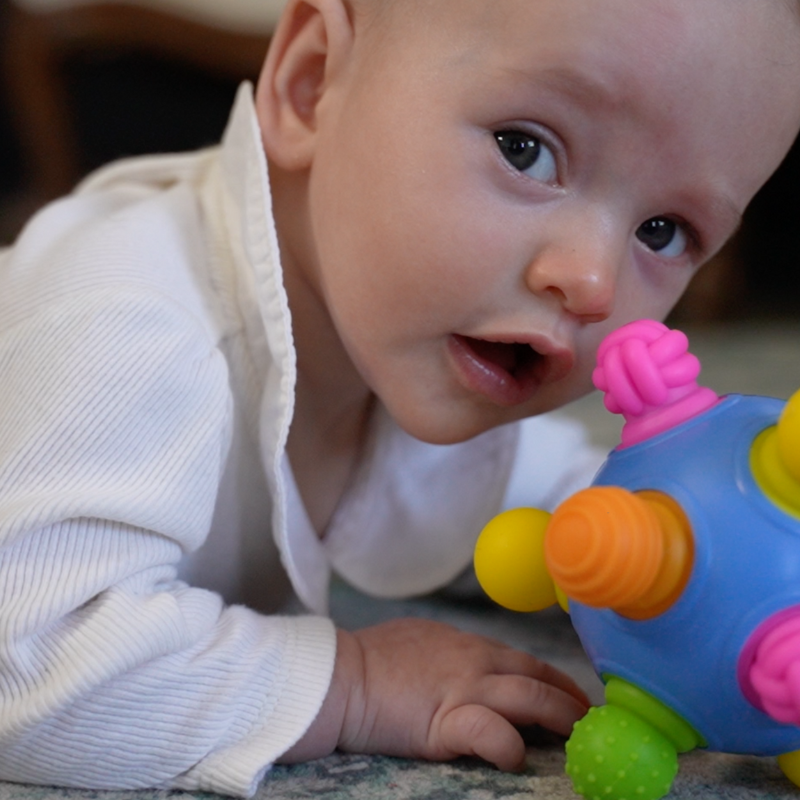The Importance of Safety in Infant Bath Toys
Safety is key when choosing infant bath toys. Babies explore through their senses, including touch and taste. This can expose them to choking hazards or harmful chemicals. It is vital to select toys that are free from small detachable parts and toxic materials. Additionally, these toys should be easy to clean to prevent mold and bacteria growth.
Safe Materials: Look for toys made of materials that are BPA-free, phthalate-free, and PVC-free. These materials are less likely to contain harmful chemicals.
Proper Size: Ensure that toys are large enough to prevent swallowing or choking. They should not fit into a baby’s mouth.
Quality Seals: Toys with safety certifications give extra assurance. Look for approval seals from recognized institutions that focus on product safety for children.
Durability: Infants can be rough with their toys. Durable toys without sharp edges or breakable parts are crucial for a safe playtime.
By prioritizing safety, you provide a happy and healthy play environment for your child during bath time.
Top Considerations When Choosing Bath Toys for Infants
When selecting bath toys for your infant, there are several key factors to consider. To ensure that bath time is both safe and enjoyable, it’s essential to pick toys that adhere to the highest standards of safety while also keeping your little one engaged.
Non-Hazardous Materials: Always choose infant bath toys crafted from non-toxic materials. These should be free from BPA, phthalates, and PVC to reduce the risk of exposure to harmful chemicals.
Size and Shape: To prevent any choking hazards, opt for bath toys that are too large to fit entirely in your infant’s mouth. Toys should have a size and shape that make them impossible to swallow.
Educational Value: Consider toys that provide some educational value, such as those that teach cause and effect, numbers, colors, or animal names. These toys can stimulate your child’s cognitive development during their play time.
Sensory Features: Look for toys with different textures, colors, and sounds. These can help in the sensory development of your child, making bath time a learning experience.
Ease of Cleaning: Bath toys must be simple to clean. Toys that can be easily disassembled ensure that you can prevent mold and mildew by thoroughly drying each part.
Floatation: Since bath time is in the water, floatable toys add an extra element of fun. Ensure the toys you select float and are easy to grasp.
By keeping these considerations in mind, you will find toys that are not only fun but also contribute to your infant’s safety and development during bath time.
The Best Non-Toxic Materials for Infant Bath Toys
Choosing the right materials for infant bath toys is critical. Non-toxic materials ensure your baby’s health and safety are not at risk during bath time. Parents must be vigilant about the materials in toys their infants will handle and likely chew on.
Silicone: Soft, durable, and free from BPA, phthalates, and PVC, silicone is an excellent choice for bath toys. It’s also resistant to mold and bacteria.
Natural Rubber: Sourced from plants, natural rubber is a safe, eco-friendly option. Be certain it’s untreated with chemicals.
Foam: Free from toxic additives, some foams provide buoyancy and softness for safe play. Check for safety certifications.
Organic Cotton: While not ideal for all bath toys, organic cotton can be used for washable dolls and other absorbent toys.
Wood: Sustainable and solid, wood toys treated with non-toxic, water-based paints are safe, though less common for the bath.
Be sure to check labels for any certifications that affirm the toy’s non-toxic status. Frequently, these materials are also easier to clean—another win for keeping your infant’s bath time risk-free and full of delight.
Age-Appropriate Infant Bath Toys
Selecting age-appropriate toys is crucial for your infant’s safety and developmental growth during bath time. As infants grow, their abilities and interests evolve, so should their toys. Here are some tips to consider for each stage of infancy:
0-6 Months: At this stage, infants are mostly observing their surroundings. Choose toys with bright colors and simple shapes to catch their attention. Soft-textured floating toys can be good as they begin to grasp and reach.
6-12 Months: When babies start to sit and engage more during bath time, introduce toys that encourage interaction. Squeeze toys that squirt water or toys with movable parts are fun and can help develop motor skills.
12-18 Months: As infants approach toddlerhood, they may enjoy more complex toys. Items that can be filled, dumped, and cause reactions like water wheels are great for understanding cause and effect.
18 Months and Up: Older toddlers can handle more intricate toys. Bath time can be educational with toys shaped like letters, numbers, or items that introduce simple concepts.
Always ensure that the toys match your infant’s developmental milestones. The toys should offer some challenge but still be safe and accessible for their age group. Avoid toys with small parts for younger infants, as these can pose a choking risk. Always supervise your child during bath time to ensure a secure and enjoyable experience.
Innovative Features in Modern Infant Bath Toys
Modern infant bath toys come with innovative features that not only amuse babies but also support their development. Manufacturers are constantly looking for ways to enhance the playtime experience in the tub. Here are some of the standout features you can find in today’s infant bath toys.
Interactive Elements: Toys with buttons, levers, and dials can captivate infants’ attention. They learn cause and effect as they see their actions make things happen.
Sensory Stimulation: Many toys now have built-in features for sensory play. They may include various textures, sounds, and lights that stimulate a baby’s senses.
Educational Themes: Some bath toys are designed with educational purposes in mind. They can introduce basic concepts such as colors, shapes, and simple words.
Temperature Indicators: Innovative toys might have materials that change color to indicate if the water is too hot for the infant’s sensitive skin.
Eco-friendly Options: There’s a rise in eco-friendly toys made from biodegradable materials, catering to environmentally conscious parents.
Smart Toys: A few high-tech toys come with waterproof components that allow for interactive play using smart technology.
Adaptability: Some bath toys are designed to grow with the child, transforming in functionality to match the child’s developing abilities.
These inventive features in infant bath toys help ensure that bath time is as enriching as it is entertaining. When choosing toys with these modern features, it’s still essential to prioritize safety and age appropriateness, as discussed earlier in our blog.
Cleaning and Storing Infant Bath Toys to Prevent Mold
Proper cleaning and storage of infant bath toys are crucial to prevent mold and bacteria build-up. Mold thrives in wet, warm environments, making bath toys particularly susceptible. Here are practical steps to ensure your infant’s bath toys remain clean and mold-free:
Immediate Rinsing: After bath time, rinse toys with clean water to wash away soap residue and leftover bathwater.
Thorough Drying: Shake off excess water and let toys air dry completely before storing them. Avoid leaving toys in the bathtub or in a moist area.
Regular Deep Cleaning: Soak toys in a mixture of warm water and vinegar or use a mild bleach solution occasionally to disinfect them. Always rinse well after cleaning.
Avoiding Water Retention Toys: Choose toys that don’t trap water, as these can be harder to dry and clean. If your child has squirt toys, make sure to empty them after every use.
Proper Storage: Invest in a mesh bag or a toy bin with drainage to keep toys dry when not in use. Avoid airtight containers that can retain moisture.
Check for Damage: Inspect toys regularly for cracks or breaks where water could collect. Discard damaged toys that could harbor mold.
Stay Natural: Whenever possible, use natural alternatives for cleaning agents. They’re safer for your infant and often just as effective.
By following these steps, you maintain a safe, hygienic environment for your infant. Clean and well-maintained bath toys will ensure that your child’s tub time remains a fun, mold-free experience.
Popular Types of Infant Bath Toys
With the wide array of infant bath toys available, choosing the right ones can be daunting. However, knowing the popular types can guide you to finding the perfect playful companions for your little one’s tub time. Here are some widely loved categories of bath toys that are both entertaining and safe for infants.
Floating Toys: These are classic and a must-have for any infant’s bath time. Look for ducks, boats, or foam shapes that stay afloat and provide endless fun.
Squirt Toys: Although they require careful cleaning to avoid mold, squirt toys can bring lots of giggles. Just make sure to empty them out after each use.
Sensory Balls: Textured or soft balls designed for water play can enhance sensory development with their varying surfaces and materials.
Stacking Cups: Simple and multifunctional, stacking cups can be filled, poured, and stacked, teaching infants about size and volume.
Bath Puzzles: Made of water-friendly materials, these puzzles stick to the bath walls and encourage problem-solving skills.
Musical Toys: Some toys are designed to make noise when interacted with, captivating babies with the sounds of music or bells.
Always remember to choose toys based on their safety features and your child’s age. Each toy type should be free from harmful chemicals, easy to clean, and size-appropriate to prevent choking. By selecting from these popular types, you’ll ensure that your infant finds joy and development opportunities with every splash and play session during bath time.
Where to Find and Purchase Infant Bath Toys
Finding the right infant bath toys can be a simple process if you know where to look. Here are some options for parents searching for engaging and safe bath toys for their little ones.
Baby Stores: Specialized baby stores often have a curated selection of quality bath toys designed for infants. These stores focus on safety and educational value.
Online Retailers: Websites like Amazon offer a vast range of infant bath toys from various brands. You can read reviews and compare prices easily.
Department Stores: Larger department stores typically carry a variety of infant products, including bath toys. You may find frequent sales or promotions.
Toy Stores: These stores may not specialize in infant toys, but they often have a section dedicated to baby products, including bath toys.
Second-hand Shops: For eco-conscious parents, second-hand shops can be a goldmine for bath toys. Just be sure to sanitize them well before use.
Parenting Groups: Local parenting groups or online communities often share or swap infant toys, which can include bath toys.
When purchasing infant bath toys, always check for safety certifications and ensure they are appropriate for your baby’s age. Remember to inspect the toys for any potential hazards and prioritize the materials they are made from to prevent any risk of harm. With these tips in mind, you can provide a delightful and safe bath time experience for your child.
